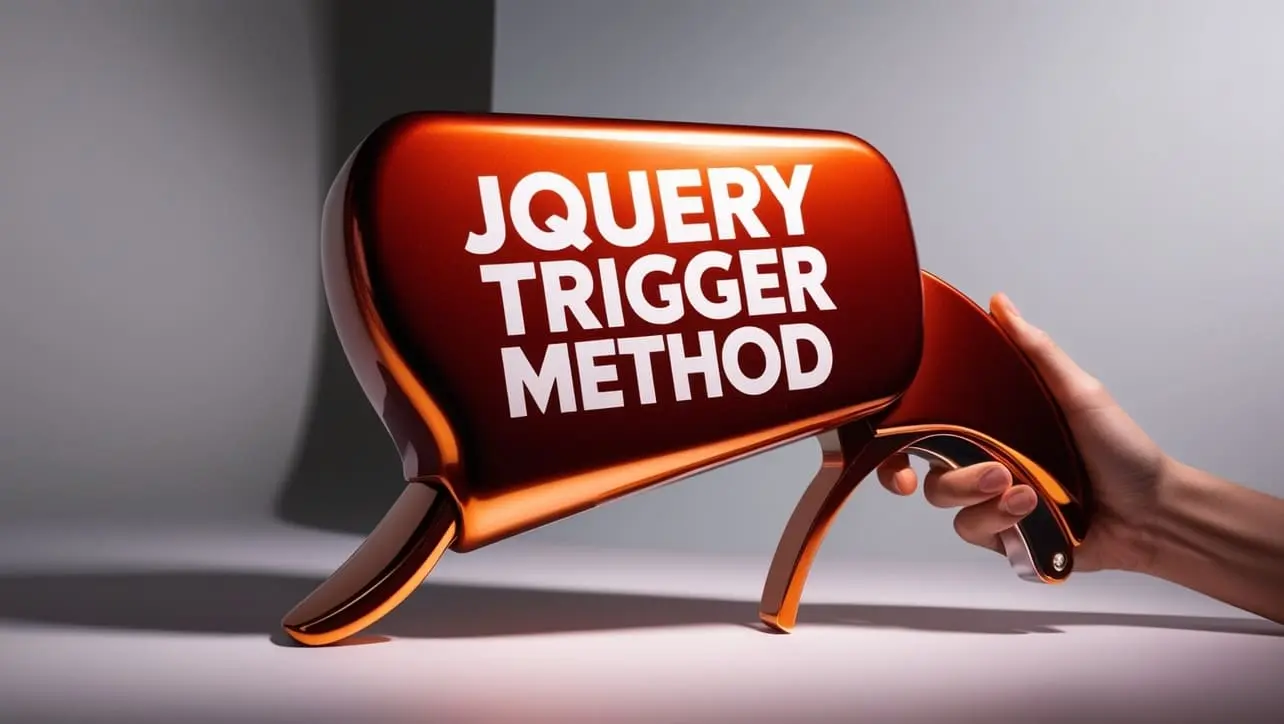
jQuery Topics
- jQuery Introduction
- jQuery Callbacks
- jQuery deferred
- jQuery selectors
- jQuery Ajax Events
- jQuery Ajax Methods
- jQuery Keyboard Events
- jQuery Keyboard Methods
- jQuery Form Events
- jQuery Form Methods
- jQuery Mouse Events
- jQuery Mouse Methods
- jQuery Event Properties
- jQuery Event Methods
- jQuery HTML
- jQuery CSS
- jQuery Fading
- jQuery Traversing
- jQuery Utilities
- jQuery Properties
jQuery .trigger() Method

Photo Credit to CodeToFun
🙋 Introduction
In jQuery, the .trigger() method serves as a powerful tool for triggering events programmatically. This method allows you to simulate various events like clicks, key presses, and custom events, enabling you to enhance the interactivity and functionality of your web pages. Understanding how to effectively use the .trigger() method can greatly expand your capabilities as a web developer.
In this comprehensive guide, we will explore the jQuery .trigger() method with practical examples to demonstrate its versatility and utility.
🧠 Understanding .trigger() Method
The .trigger() method in jQuery is used to programmatically trigger events on selected elements. It simulates the occurrence of a specified event, invoking any event handlers bound to the element. This method can be particularly useful when you need to trigger events in response to user interactions or in automated testing scenarios.
💡 Syntax
The syntax for the .trigger() method is straightforward:
$(selector).trigger(eventType, [extraParameters]);📝 Example
Simulating Click Events:
You can use the
.trigger()method to simulate a click event on a button. This is helpful when you want to trigger certain actions without actual user interaction:index.htmlCopied<button id="myButton">Click Me</button>example.jsCopied$("#myButton").click(function() { console.log("Button clicked!"); }); $("#myButton").trigger("click");This will log Button clicked! to the console, indicating that the click event was successfully triggered.
Triggering Custom Events:
jQuery allows you to define and trigger custom events, providing a flexible mechanism for communication between different parts of your application:
example.jsCopied$("#myElement").on("customEvent", function() { console.log("Custom event triggered!"); }); $("#myElement").trigger("customEvent");This will log Custom event triggered! to the console, demonstrating the triggering of a custom event named "customEvent".
Passing Data with Triggered Events:
You can also pass additional data along with triggered events, providing context for event handlers.
example.jsCopied$("#myElement").on("customEvent", function(event, data) { console.log("Received data:", data); }); $("#myElement").trigger("customEvent", "Hello, world!");This will log Received data: Hello, world! to the console, showing how data can be passed and accessed within event handlers.
Chaining Triggered Events:
You can chain multiple
.trigger()calls to simulate a sequence of events, enabling complex interactions.example.jsCopied$("#myElement").trigger("mousedown").trigger("mouseup");This simulates a mouse click by triggering a mousedown event followed by a mouseup event on the specified element.
🎉 Conclusion
The jQuery .trigger() method is a valuable tool for programmatically triggering events in your web applications. Whether you need to simulate user interactions, trigger custom events, or pass data to event handlers, this method provides a convenient and efficient solution.
By mastering its usage, you can create more interactive and dynamic web pages that respond seamlessly to user actions and system events.
👨💻 Join our Community:
Author

For over eight years, I worked as a full-stack web developer. Now, I have chosen my profession as a full-time blogger at codetofun.com.
Buy me a coffee to make codetofun.com free for everyone.
Buy me a Coffee












If you have any doubts regarding this article (jQuery .trigger() Method), please comment here. I will help you immediately.